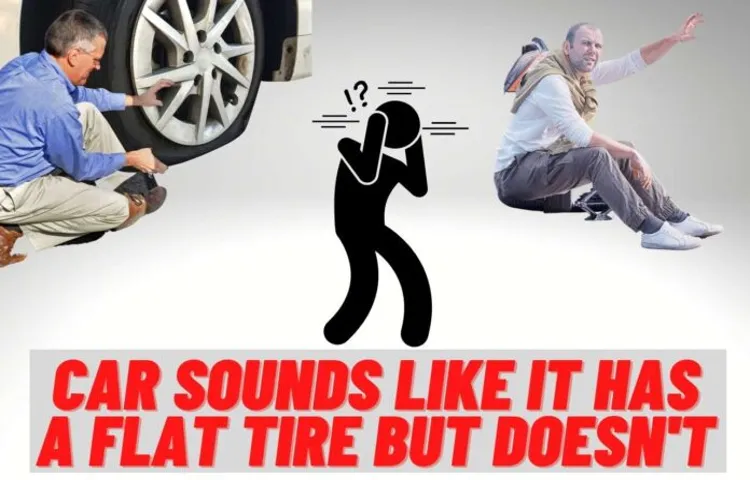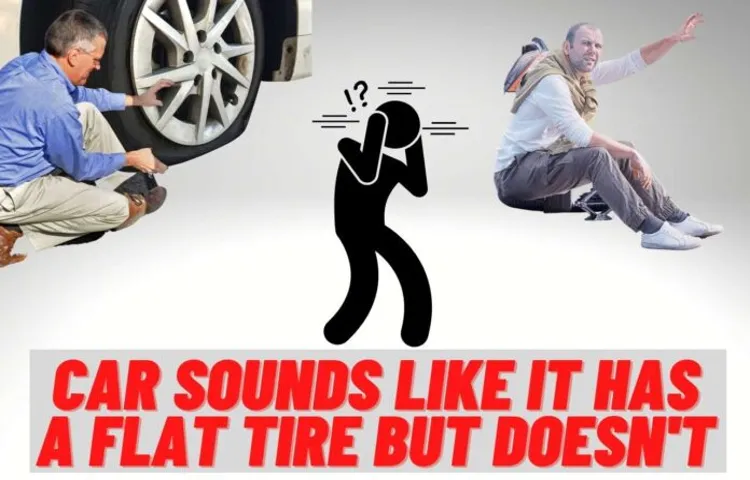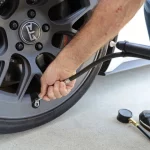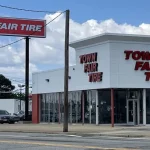Have you ever been driving down the road and suddenly heard the sounds of a flat tire? It can be a concerning and scary experience, especially if you’re not sure what caused it. There are a variety of reasons why you may hear these sounds, ranging from normal wear and tear to more serious issues. Understanding the causes of flat tire sounds while driving can help you identify the problem quickly and prevent further damage.
In this blog post, we’ll explore some of the most common reasons why you may hear these sounds and what you can do to fix the problem. So, buckle up and let’s explore the world of flat tire sounds!
Possible Causes
If you hear what sounds like a flat tire when driving, chances are there’s an issue with your vehicle’s suspension system. The suspension system helps to absorb shock and keep your vehicle stable while driving. A worn-out suspension system can cause wheel misalignment, tire wear, and a bumpy ride.
Another possible cause is a damaged or worn-out wheel bearing. When a wheel bearing wears out, it can make a humming or grinding noise which could be mistaken for a flat tire sound. Additionally, a loose or damaged brake caliper can cause a similar noise when driving.
It is essential to get your vehicle inspected by a qualified mechanic to identify the root cause of the problem. A quick diagnosis can prevent further damage and ensure your vehicle’s safety on the road.
Low Tire Pressure
If you’ve ever driven a car with low tire pressure, you know what a bumpy and unpleasant experience it can be. Low tire pressure is a common issue that can be caused by a variety of factors. One possible cause of low tire pressure is a leak in your tire.
This can be caused by a puncture, a damaged valve stem, or a cracked wheel. Another possible cause is a problem with your tire pressure monitoring system. If your car is equipped with a TPMS, it may incorrectly read the pressure in your tires.
Additionally, low tire pressure can also be caused by changes in air temperature. Cold weather can cause the air inside your tires to contract, leading to lower pressure. It’s important to regularly check your tire pressure to prevent any potential safety hazards that could arise from driving on underinflated tires.

Punctured Tire
A punctured tire can be a frustrating and unexpected issue for any driver. There are several possible causes for a tire puncture, including sharp debris on the road, impacts from potholes or curbs, and even wear and tear from age or overuse. Additionally, improper inflation can lead to a flat tire.
It is important to frequently check your tire pressure and ensure that you are using the correct tire size for your vehicle. In some cases, a punctured tire can also be a sign of a larger underlying issue with your vehicle’s suspension or alignment. If you experience a puncture, it is essential to have it repaired or replaced as soon as possible.
Driving on a punctured tire can lead to further damage, compromising your safety on the road.
Bad Wheel Bearings
Wheel Bearings If you’re experiencing a rumbling, grinding or humming noise while driving, your wheel bearings may be failing. This could be caused by various factors such as inadequate lubrication, improper installation, dirt or debris contamination and wear and tear due to age. Wheel bearings are important components that support your vehicle’s weight and enable the wheels to rotate.
When they fail, it can cause unsafe driving conditions and severe damage to your car’s suspension. If you suspect that your wheel bearings are going bad, it’s essential to have them inspected and replaced timely. Neglecting the problem could lead to further damage and an expensive repair bill.
Remember, your wheels are critical for your vehicle’s stability, and your safety is on the line. Don’t take chances when it comes to your car’s maintenance, and always address any issues promptly.
Worn Suspension System
A worn suspension system can be the cause of several issues with your vehicle’s handling and ride quality. One possible cause of a worn suspension system is normal wear and tear over time. The suspension system is under a lot of stress, especially on rougher roads, and can wear out faster than other parts of your car.
Another cause of a worn suspension system is neglecting routine maintenance and repairs. If you ignore minor issues such as worn out shocks or bushings, they can quickly turn into bigger problems that affect the remaining components of the suspension system. Drastic changes in temperature and humidity can also cause the rubber and metal parts in the suspension system to expand and contract, leading to cracks, rust, and other damage that can cause wear and tear on the system.
If you’re noticing unusual noises or vibrations when driving, or if your car isn’t handling as well as it used to, it might be time to have your suspension system checked by a professional mechanic. They can diagnose the issue and provide you with the necessary repairs to keep you safe on the road.
Diagnosing the Problem
If you’re hearing a sound like a flat tire when driving, it likely means there’s an issue with one or more of your tires. The first thing to check for is obviously a flat tire, but if all your tires appear to be fine, the problem may be with the wheel bearings or suspension system. It’s also possible that the sound is being caused by worn-out brake pads or shoes, which will need to be replaced.
Regardless of the cause, it’s important not to ignore the sound as it could be a warning sign of a more serious problem. If you notice the sound getting louder or more persistent, it’s best to bring your vehicle to a qualified mechanic for an inspection as soon as possible.
Physical Inspection
When faced with a problem with your car, a physical inspection is usually the first step in diagnosing the problem. This involves checking the exterior and interior of the car for any signs of damage or wear and tear. Additionally, mechanics will usually pop the hood and inspect the engine, including the battery, belts, hoses, and fluids.
They will also evaluate the condition of the tires and the suspension system. By performing a thorough physical inspection, mechanics can often identify the cause of the problem and propose a course of action to resolve it. If you notice any unusual noises or behaviors with your car, it’s important to bring it in for a physical inspection as soon as possible to prevent further damage.
Listening for the Sound
Have you ever tried to diagnose an unknown problem with your car or home appliances by listening for strange sounds? This method can be surprisingly effective, as unusual noises can often indicate specific issues that need attention. For example, a screeching sound coming from your brakes could mean that they need to be replaced, while a gurgling noise coming from your water heater could indicate a buildup of sediment. It’s important to take note of when the sound occurs, as well as any other symptoms or behaviors that are present.
By honing in on the source of the sound, you can often save yourself time and money by addressing the issue before it becomes more serious. So, next time you hear an unfamiliar noise, keep your ears peeled and try to diagnose the problem yourself before calling for professional help.
Checking Tire Pressure
One of the most common issues with our vehicles is underinflated tires. Properly inflated tires are essential for optimal performance, fuel efficiency, and safety. You may have noticed that your vehicle is not driving as smoothly as it used to, or it’s consuming more fuel than usual.
A quick check of your tires may reveal that they are not inflated to the correct pressure. This can be resolved by checking the recommended pressure, which can be found in your vehicle owner’s manual or on the tire itself. You can then use a tire pressure gauge to measure the pressure of each tire and inflate them to the recommended level.
Remember, regularly checking tire pressure can prevent more significant issues from arising, and it’s worth the added effort in the long run.
Fixing the Problem
If you’re experiencing a sound like a flat tire when driving, the first step in fixing the problem is to inspect your tires. Check them for any visible signs of damage or wear, such as punctures, bulges, or bald spots. If you see any issues, you’ll likely need to replace the tire.
However, if your tires look fine, you may need to look to other possible culprits, such as your brakes or wheel bearings. A worn or damaged brake pad can cause a screeching or squealing sound, while a faulty wheel bearing can cause a whirring or humming noise. Whatever the cause, it’s important to address the problem promptly to avoid further damage or safety issues.
Don’t ignore that strange sound – get it checked out by a mechanic as soon as possible!
Replacing the Tire
If you’ve ever found yourself unexpectedly stranded with a flat tire, you know how frustrating and inconvenient it can be. But don’t worry, replacing a tire is actually quite straightforward with the right tools and some basic knowledge. First, locate your spare tire and the tools needed to remove the flat tire.
Jack your car up and remove the lug nuts, being sure to keep them in a safe place. Next, remove the flat tire and replace it with the spare, tightening the lug nuts back in place. It’s important to remember that a spare tire is only designed to get you to a repair shop, so be sure to have the tire repaired or replaced as soon as possible.
By following these simple steps, you can quickly and easily fix the problem and get back on the road in no time.
Repairing the Puncture
When you get a puncture on your bike, it can be a frustrating experience, but don’t worry, it’s not the end of the world! Fixing a puncture isn’t as daunting as it may seem, and with a few simple tools and a bit of know-how, you’ll be back on your bike in no time. The first step is to remove the wheel and locate the puncture. Once you’ve found it, use a sharp implement to remove any debris that may be lodged in the tyre.
Then, take a puncture repair kit and follow its instructions to patch up the hole. Inflate the tyre using a pump and check to make sure there are no other punctures. With a little bit of patience and some elbow grease, you can easily repair a puncture and avoid the expense of taking your bike to a mechanic.
So, the next time you get a pesky puncture, don’t panic, you’ve got this!
Replacing Wheel Bearings
If you hear a loud humming or grinding noise coming from your car’s wheels, it’s likely a sign that your wheel bearings might need replacing. Wheel bearings play a critical role in keeping your wheels rotating smoothly. The process of replacing wheel bearings can seem daunting, but it’s a necessary step to ensure your safety on the road.
If you’re uncertain how to replace your wheel bearings, it’s best to consult a mechanic or watch a few tutorials online. The process generally involves removing the wheel and brake assembly, disconnecting the old bearings, installing new ones, and reassembling the wheel. It’s essential to ensure that the new bearings are properly lubricated to prevent any future issues.
By replacing your wheel bearings when you start noticing problems, you can avoid a potentially dangerous situation while driving down the road.
Replacing Suspension Parts
If you’re experiencing a bumpy ride and your car feels like it’s bouncing all over the place, it could be a sign that your suspension parts need to be replaced. Suspension parts play a crucial role in ensuring a smooth and stable ride, and when they start to wear out, it can result in a very uncomfortable drive. The good news is that fixing the problem is relatively simple and affordable.
By replacing key components like shocks, struts, and control arms, you can restore your car’s suspension and get back to driving without any bumps or jolts. Not only will this make your ride more comfortable, but it will also improve your car’s handling and safety on the road. So, if you’re experiencing any issues with your suspension, don’t wait to get it fixed.
Your car (and your back) will thank you!
Conclusion
In conclusion, hearing a flat tire while driving is like listening to an unpopular song on repeat – annoying and frustrating. It’s a sound that no one wants to hear, but it’s a necessary reminder to pull over and address the issue before it causes more damage. Just like a flat tire, sometimes we need to stop and take a break to ensure our own well-being.
So, next time you hear that dreadful sound, remember to take it as a sign to slow down and prioritize your own maintenance. Stay safe on the road and in life!”
FAQs
How can I tell if the sound while driving is coming from a flat tire?
One way to know if your tire is flat is by feeling the car pulling to one side or experiencing difficulty in steering. Additionally, the sound of the flat tire tends to be louder as the vehicle picks up speed.
Is it safe to keep driving if I hear a sound like a flat tire?
No, it is not safe to keep driving if you hear a sound like a flat tire. A flat tire can cause you to lose control of your vehicle, especially at high speeds and can result in an accident. Pull over and check your tire as soon as possible.
What should I do if I have a flat tire while driving?
If you have a flat tire while driving, try to slow down and pull over to a safe location immediately. Turn on your hazard lights to alert other drivers and begin the process of changing your tire or calling for roadside assistance.
Can I repair a flat tire or do I need to replace it?
It depends on the severity of the damage. If the hole or puncture is small, it can generally be repaired. If the damage is severe or on the sidewall, the tire will need to be replaced.
How can I prevent getting a flat tire while driving?
Regular maintenance such as checking tire pressure, tire rotation, and alignment can help prevent flat tires while driving. Additionally, avoiding rough terrains and road hazards can reduce the risk of getting a flat tire.



